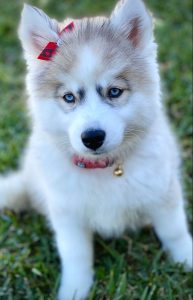Recovery after surgery or major trauma is a critical period for your dog, requiring careful attention and support to ensure they regain their health and vitality. Proper post-operative care involves not only physical healing but also emotional and psychological support. This comprehensive guide will provide detailed steps to help your dog recover successfully.
1. Understanding Post-Surgical Needs
– Follow Veterinary Instructions:
- Your vet will provide specific instructions regarding medication, activity restrictions, and follow-up appointments. Adhering to these guidelines is crucial for a smooth recovery.
– Pain Management:
- Pain relief is essential for your dog’s comfort and healing. Administer prescribed pain medications as directed and watch for signs of pain, such as whining, restlessness, or changes in behavior.
2. Creating a Comfortable Recovery Environment
– Quiet, Safe Space:
- Set up a quiet, comfortable area for your dog to rest, away from household noise and activity. This space should have a cozy bed, fresh water, and their favorite toys for comfort.
– Accessibility:
- Ensure that your dog’s recovery area is easily accessible and safe. Avoid stairs and provide non-slip surfaces to prevent falls and injuries.
3. Monitoring and Managing Wound Care
– Check Incisions Regularly:
- Inspect the surgical site daily for signs of infection, such as redness, swelling, or discharge. Contact your vet if you notice any concerning changes.
– Prevent Licking and Chewing:
- Use an Elizabethan collar (e-collar) or an alternative to prevent your dog from licking or chewing the incision. This helps avoid infections and complications.
– Keep the Area Clean:
- Follow your vet’s instructions on cleaning the incision site. Use gentle, vet-approved solutions and avoid harsh chemicals.
4. Administering Medications
– Follow Dosage Instructions:
- Administer all medications, including antibiotics and pain relievers, as prescribed. Missing doses or incorrect administration can hinder recovery.
– Easy Administration:
- Use treats or special pill pockets to make administering pills easier. Ensure your dog swallows the medication and doesn’t spit it out.
5. Managing Your Dog’s Diet
– Nutritious Meals:
- Provide a balanced, nutritious diet to support healing. Your vet may recommend a specific diet tailored to your dog’s needs during recovery.
– Small, Frequent Meals:
- Offer small, frequent meals to prevent nausea and encourage eating, especially if your dog’s appetite is reduced post-surgery.
– Hydration:
- Ensure your dog has access to fresh water at all times. Proper hydration is essential for healing.
6. Regulating Physical Activity
– Restrict Activity:
- Limit your dog’s physical activity according to your vet’s instructions. Avoid running, jumping, and rough play that could stress surgical sites or injuries.
– Gentle Exercise:
- Gradually reintroduce gentle exercise, such as short, controlled walks, to prevent stiffness and maintain muscle tone. Always follow your vet’s recommendations.
7. Providing Emotional Support
– Offer Comfort and Reassurance:
- Spend time with your dog, providing gentle petting and soothing words. Your presence can reduce anxiety and promote healing.
– Mental Stimulation:
- Provide mental stimulation through puzzle toys or interactive games that don’t require physical exertion. Keeping your dog’s mind engaged can prevent boredom and stress.
8. Monitoring for Complications
– Recognize Signs of Complications:
- Be vigilant for signs of complications, such as excessive swelling, unusual discharge, fever, or changes in behavior. Contact your vet immediately if you observe any of these symptoms.
– Regular Check-Ins:
- Maintain regular communication with your vet and attend all scheduled follow-up appointments to monitor your dog’s progress and address any concerns promptly.
9. Supporting Long-Term Recovery
– Physical Therapy:
- Consider physical therapy to aid in your dog’s recovery, especially after major surgery or trauma. Therapies such as hydrotherapy, massage, and range-of-motion exercises can improve mobility and strength.
– Nutritional Supplements:
- Consult your vet about supplements that may support recovery, such as omega-3 fatty acids for inflammation or joint supplements for mobility.
10. Conclusion
Supporting your dog through recovery requires patience, dedication, and careful adherence to veterinary advice. By creating a comfortable environment, managing medications and diet, regulating activity, and providing emotional support, you can help your dog heal and return to their happy, healthy self.
FAQs
1. How can I make my dog comfortable after surgery?
- Create a quiet, safe space with a comfortable bed, keep their favorite toys nearby, and provide gentle, soothing attention. Ensure they have easy access to water and avoid loud noises or disruptions.
2. What should I do if my dog refuses to eat after surgery?
- Offer small, frequent meals of their favorite food or a vet-recommended recovery diet. Warm the food slightly to enhance its aroma and encourage eating. If your dog continues to refuse food, consult your vet.
3. How long does it take for a dog to recover from surgery?
- Recovery time varies depending on the type of surgery and the individual dog. Minor surgeries may take a few days to a week, while major surgeries can require several weeks to months of recovery. Follow your vet’s guidance for specific timelines.
4. Can I give my dog over-the-counter pain medication after surgery?
- Never give your dog over-the-counter pain medications without consulting your vet. Many human medications are toxic to dogs. Use only vet-prescribed medications.
5. How can I prevent my dog from licking their incision?
- Use an Elizabethan collar (e-collar) or an alternative to prevent licking. Supervise your dog closely and provide distractions, such as toys or gentle activities, to keep them occupied.


